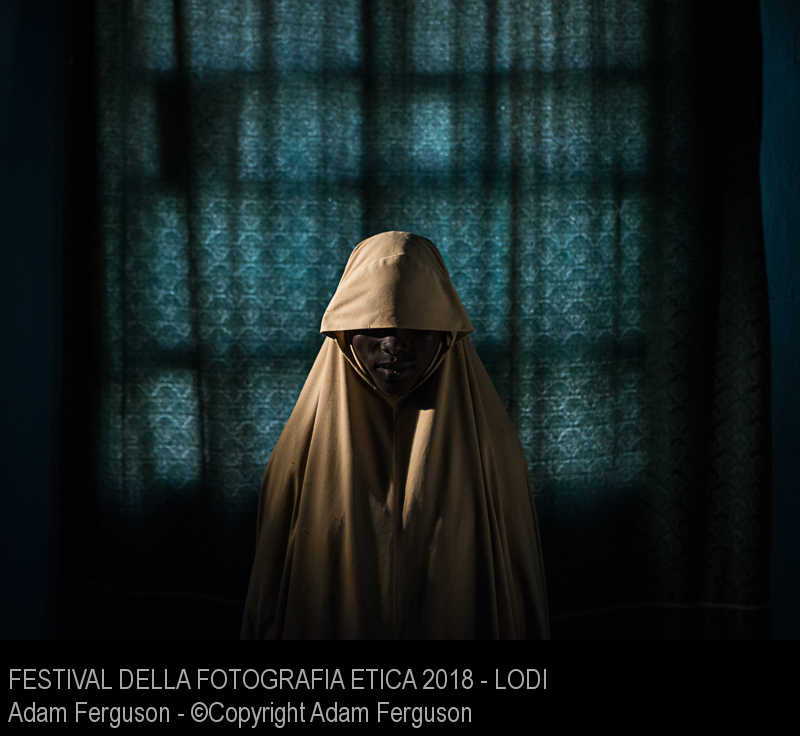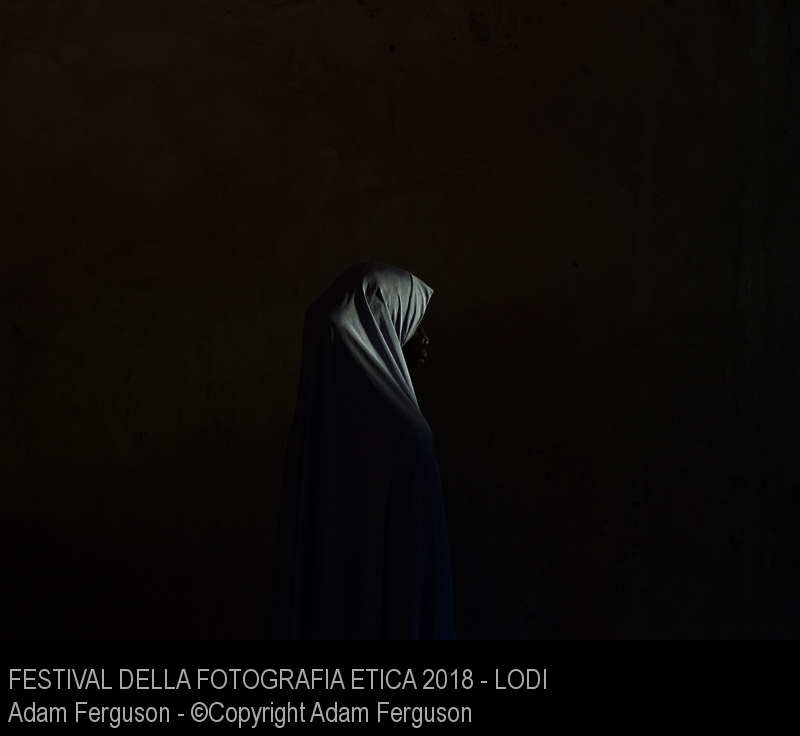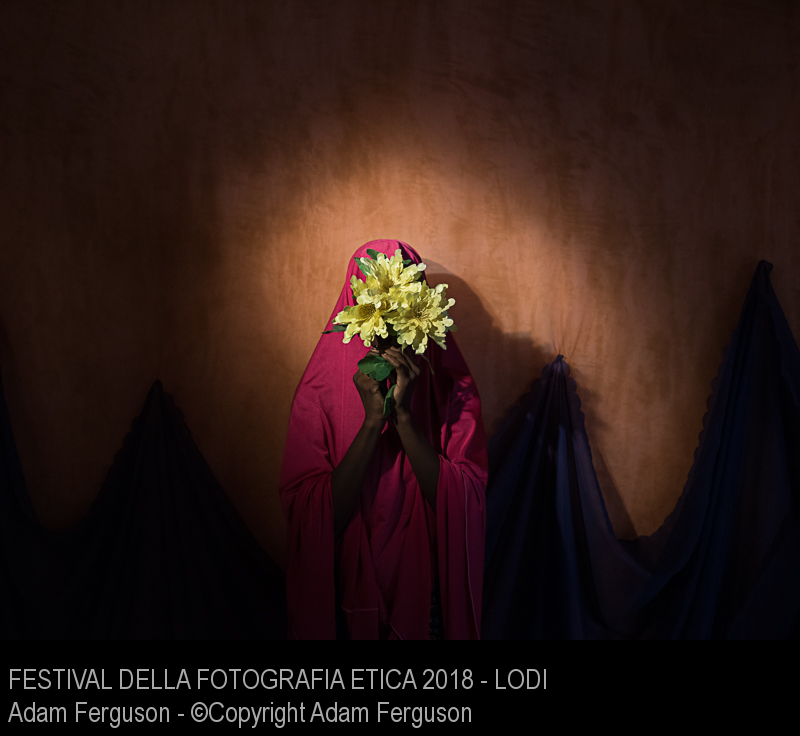In response to inequality and corruption, Boko Haram formed in 2002 as an Islamist organisation in northern Nigeria and developed into a violent insurgency in 2009. Since the start of the conflict between Boko Haram and the Nigeria Government, over 2 million people have been displaced and 20,000 killed, with more than 2,000 women and girls being kidnapped since 2014.
This work explores the stories of two-groups of brave young women kidnapped in this conflict; the Chibok schoolgirls and young women trained and deployed as suicide bombers.
After being kidnapped from their villages and trained to carry out suicide bombing attacks, Boko Haram strapped these young women with explosives and sent them to blow themselves up at checkpoints and markets. After being deployed, the women disobeyed their captors and found help instead of carrying out the attack. Female suicide bombers are seen by the militants as a primary weapon of war. In 2016, The New York Times reported at least one in every five suicide bombers deployed by Boko Haram over the previous two years had been a child, usually a girl. The group used 27 children in suicide attacks in the first quarter of 2017, compared to 9 during the same period the previous year.
In 2014, 276 schoolgirls were kidnapped from a school in Chibok, igniting global outrage and the #BringBackOurGirls movement. Over the following four years some of the girls managed to escape and others were freed through government intervention. They were moved to a university campus where they now are attending courses together. The images the world initially saw were of teenage girls dressed in dark robes, being held captive. Deliberately referencing the iconic painting ‘Tutu’, by Nigerian artist Ben Enwonwu, Ferguson’s goal was to pay homage to the visual language of Enwonwu’s work while instilling a sense of beauty and dignity in the subjects.


